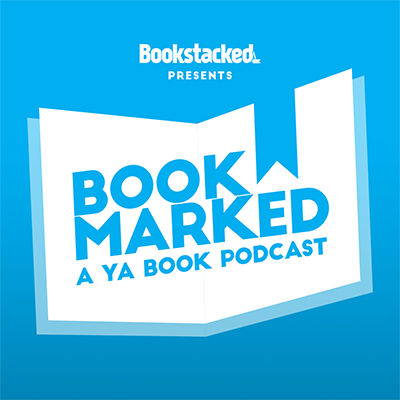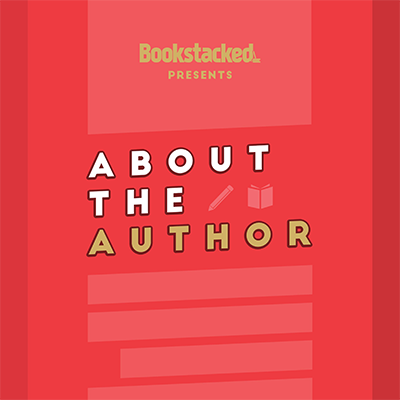This article is part of a series of articles on blogging. Click here to access Bookstacked’s guide to book blogging. »
When it comes to blogging books, reviews tend to be king, but it doesn’t necessarily have to be that way.
I wanted Bookstacked to be much larger than book reviews, though I knew those reviews would be an integral part of its DNA. They’re a staple of book culture and I think that’s why they reign supreme when it comes to the book blogosphere. Still, I hoped to build an ultimate destination for book nerds. I envisioned news articles, opinion pieces, author interviews, lists. Over the years, I’ve often said that Bookstacked is “much more than just a book blog.”
Admittedly, my vision for Bookstacked was way over the top. If you’re wanting to enter book blogging, you’re in complete control when it comes to the types of content you’ll write. If you want to stick to reviews, you can. If you want to shoot for interviews, go for it.
Here are some content ideas for your website, along with some tips for each type. And if you’re wanting to do something more along the lines of what we did at Bookstacked, be sure to review the final section, where I talk about how we achieved what we did.
Book Reviews
Like I already mentioned, book reviews are a staple in this space. If you’re just getting started, you might want to follow a simple three-part formula:
- Start the review with some basic info about the book — a summary of the plot and characters are helpful, but generally avoid spoilers.
- Evaluate the book. What were some things you liked? What did you dislike? Try to be fair and, more importantly, honest in your evaluation.
- Conclude your review by summarizing your overall thoughts on the book. You might consider including whether or not you would recommend the book to others, or calling out who you might recommend the book to.
I know the word “formula” might sound gross. You’re creative, after all. You don’t need a formula! Maybe you’re right, but if you’re new to the space, a simple outline like the one above can be a good place to start.
As you begin to write, you’ll naturally develop your own voice and style.
The thing is, as you begin to write, you’ll naturally develop your own voice and style. You might make adjustments to the outline or even add your own personal flourishes. I’ve seen some reviewers employ gifs, others have come up with their own unique 5-point rating system. (We stuck to the traditional 5-stars here at Bookstacked.) Some bloggers even offer awards or stamps of approval, complete with special graphics to liven up the page. Do whatever you’re comfortable with. Take some time to experiment until you’ve landed on a system and format that works best for you.
Although reviews are the staple, I do want to offer a warning. Book reviews are the most time consuming type of content to create. Reading the book itself takes time, especially if you’re into long novels. Additionally, once the book has been read, writing a well-thought-out review takes time and effort. Just keep this in mind as you budget your time.
Lists
I think a list can be the most versatile type of content you can employ on your blog. Here are a few examples of lists off the top of my head:
- Your most anticipated book releases of the month/season/year
- The best books you read this month/season/year
- Your favorite quotes from an author
- The differences between a book and its movie adaptation
- The best books in relation to any topic you want to write about (romances, beach reads, back-to-school, etc.)
You get the idea.
Lists can often be quick to write, so if you’re in a pinch for content, they might be a valuable tool to keep in your back pocket. Not to mention they’re probably the best format to use when it comes to book recommendations — another staple among book conversationalists.
Here are a few lists we created at Bookstacked that were immensely successful. Hopefully they’ll help spark an idea or two in your mind:
- 22 Book to Movie Changes in ‘The Scorch Trials’ Movie
- The Best YA Books of 2021
- YA book-to-screen adaptations to read and watch in 2022
- ‘The Ballad of Songbirds and Snakes’: The most shocking revelations
- YA’s 19 most romantic quotes about lovers
News
With Bookstacked, I wanted an entire section devoted to news, where we reported things as they happened, just as you might see in a traditional news organization. If you choose to incorporate news into your website, you don’t have to be as intense.
An easy way to bring news into your repertoire would be to publish a news roundup. You could pull the biggest news stories about your favorite series or authors and bundle them into a weekly or monthly post. Keep in mind, you should always cite and link back your sources!
If you like the idea of news, you’ll want to keep the following in mind: News demands attention. If you were to go the route we went for Bookstacked, that meant publishing news articles ASAP. If you’re going to do a news roundup, that means being consistent and carving out time each week or month to put that post together. If you let too much time pass, it’s no longer news. It’s just an old story. Again, something to consider as you manage your time.
Author interviews
I was very eager to interview authors when I started Bookstacked and we were very fortunate to be given those opportunities. While interviews aren’t likely to happen until your blog begins to grow, it never hurts to reach out to publicists and ask.
If you’ve been granted an interview, you should understand that this is a sign of trust. Both the publisher and author are trusting you with their time and energy. That means you ought to come prepared to the interview. Do your research beforehand. This means reading the author’s work, familiarizing yourself with their background and previous interviews, and coming up with a list of thoughtful and engaging questions. Avoid asking questions that have already been covered in previous interviews, and try to come up with unique and original questions that will spark interesting conversation. (Tip: Stay away from “Yes or No” questions.)
Interviews can take place in a number of formats. You could set up a phone or Zoom call, meet the author in person at a signing, or even email a questionnaire with your questions where they can write their responses.
Regardless of your approach, be respectful and professional. You might be meeting one of your heroes, but when they sit down with you, remember that they’re there to do a job.
Discussion Posts
If your blog is gaining traction, you might want to consider creating discussion posts. We often did these around big book releases, summarizing some of the most conversation-worthy moments from the story and then adding our thoughts. We always included discussion questions as well. The goal was to get readers active in the comments where discussions could take place.
Discussion posts will likely work best if you have a comments section already built into your blogging platform (this comes out of the box for most bloggers) and if you’ve already built an audience. Your readership doesn’t have to be huge. Even having one or two regular readers counts as an audience. Even better if they’re engaging with your content!
Of course, your blog itself doesn’t have to be where you interact with your audience. Many people choose to hold discussions on places like Twitter, or even Facebook and Discord. Choose whatever works best for you.
Personal Updates
This is one where I can’t talk from experience very much. Since Bookstacked has always been modeled after a news organization, we didn’t do much in ways of personal updates. However, for traditional blogs, I would argue they’re important.
You are what’s unique about your blog.
Including personal updates in your content strategy can be a great way to connect with your readers and to give them a glimpse into your life. These updates can provide a more personal and relatable touch to your blog, and can help your readers feel like they know you better.
At the end of the day, you are what’s unique about your blog. Your personality, your voice, your vibe are going to differentiate you from the other bloggers.
We’ve talked a little bit about engagement in this article. While we had successes, it was often difficult to promote engagement here at Bookstacked. Meanwhile, I saw many “smaller” blogs with active and thriving comment sections. I’ve often wondered if those blogs performed better in this aspect because they were more personable. I think readers are more drawn to people than organizations.
All of the Above
I think most people will go the route of personal book blog. That means they might pick one or two content types to focus on. However, if you decide you want to build something like Bookstacked, then that means you’re going to cast a wide net.
It’s not easy to juggle a content schedule that tries to do it all, so let me give you some advice: get help. That help could come from a friend, or maybe even someone you’ve met in the online community. When I started Bookstacked, I knew I couldn’t do it alone. I always listed open “positions” on the website, asking anyone who wanted to volunteer their time to email me.
Important: If you’ve built a team of volunteers, you need to respect them. They’re not lucky to work with you. You’re lucky to work with them. You can’t make demands or treat them like subordinates. Understand that they have a life outside of your website. Respect their priorities! And give back. Do what you can to show your appreciation. I think even a message of gratitude can go a long way, but you should also find ways to share your time with them. If someone on the Bookstacked Team told me that they wanted to learn how to podcast, interview, or learn more about journalism — I always tried to make myself available to train them and answer their questions. I don’t want to give you the impression that I was perfect. I sometimes dropped the ball, but this was something I tried to prioritize as I ran the site. Just remember that if you’re going to build a team, you have more responsibility to them than they do to you.
In conclusion …
You should set two requirements for yourself when you map out what type of content you’re going to publish and how you’re going to structure your blog:
- Do what’s most comfortable and sustainable for you
- Have fun
If those things aren’t true, you’re not going to make it very far. Don’t be afraid to shake things up and experiment until you feel like you have your footing on blogging. The Bookstacked in 2014 is very different from the Bookstacked in 2022. That evolution was part of the fun!
📚 Want to learn more about blogging? Check out the other installments in Bookstacked’s Guide to Book Blogging:









Bookstacked Comment Policy
We welcome respectful comments. Our only rule is to be kind. Rude, hateful and generally mean-spirited comments will be removed.